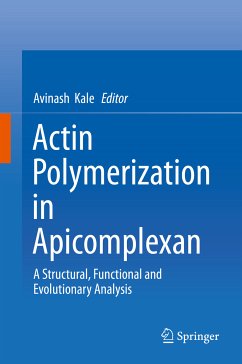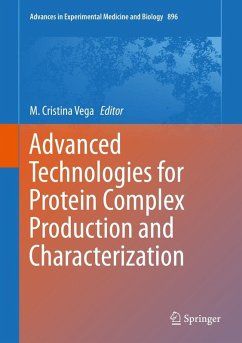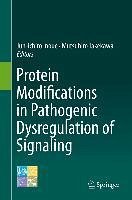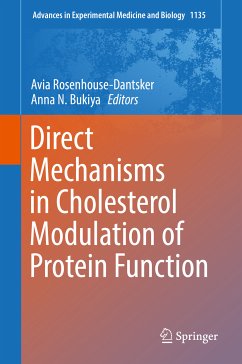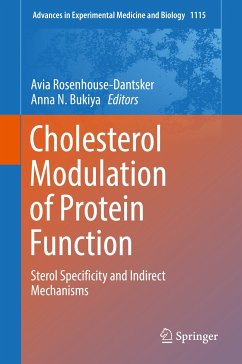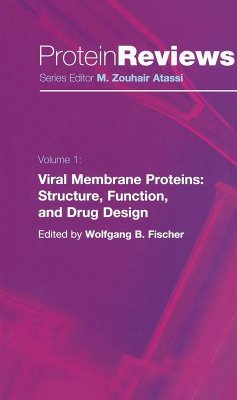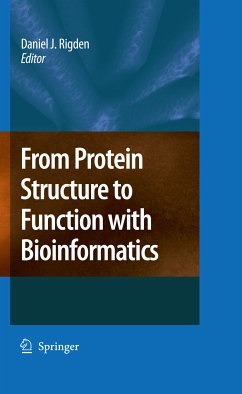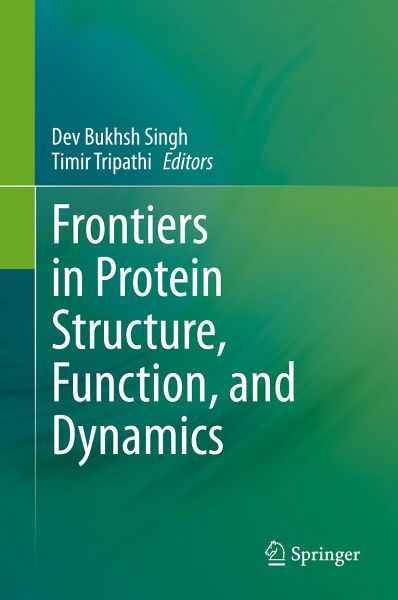
Frontiers in Protein Structure, Function, and Dynamics (eBook, PDF)
Versandkostenfrei!
Sofort per Download lieferbar
112,95 €
inkl. MwSt.
Weitere Ausgaben:

PAYBACK Punkte
56 °P sammeln!
This book discusses a broad range of basic and advanced topics in the field of protein structure, function, folding, flexibility, and dynamics. Starting with a basic introduction to protein purification, estimation, storage, and its effect on the protein structure, function, and dynamics, it also discusses various experimental and computational structure determination approaches; the importance of molecular interactions and water in protein stability, folding and dynamics; kinetic and thermodynamic parameters associated with protein-ligand binding; single molecule techniques and their applicat...
This book discusses a broad range of basic and advanced topics in the field of protein structure, function, folding, flexibility, and dynamics. Starting with a basic introduction to protein purification, estimation, storage, and its effect on the protein structure, function, and dynamics, it also discusses various experimental and computational structure determination approaches; the importance of molecular interactions and water in protein stability, folding and dynamics; kinetic and thermodynamic parameters associated with protein-ligand binding; single molecule techniques and their applications in studying protein folding and aggregation; protein quality control; the role of amino acid sequence in protein aggregation; muscarinic acetylcholine receptors, antimuscarinic drugs, and their clinical significances.
Further, the book explains the current understanding on the therapeutic importance of the enzyme dopamine beta hydroxylase; structural dynamics and motions in molecularmotors; role of cathepsins in controlling degradation of extracellular matrix during disease states; and the important structure-function relationship of iron-binding proteins, ferritins. Overall, the book is an important guide and a comprehensive resource for understanding protein structure, function, dynamics, and interaction.
Further, the book explains the current understanding on the therapeutic importance of the enzyme dopamine beta hydroxylase; structural dynamics and motions in molecularmotors; role of cathepsins in controlling degradation of extracellular matrix during disease states; and the important structure-function relationship of iron-binding proteins, ferritins. Overall, the book is an important guide and a comprehensive resource for understanding protein structure, function, dynamics, and interaction.
Dieser Download kann aus rechtlichen Gründen nur mit Rechnungsadresse in A, B, BG, CY, CZ, D, DK, EW, E, FIN, F, GR, HR, H, IRL, I, LT, L, LR, M, NL, PL, P, R, S, SLO, SK ausgeliefert werden.



